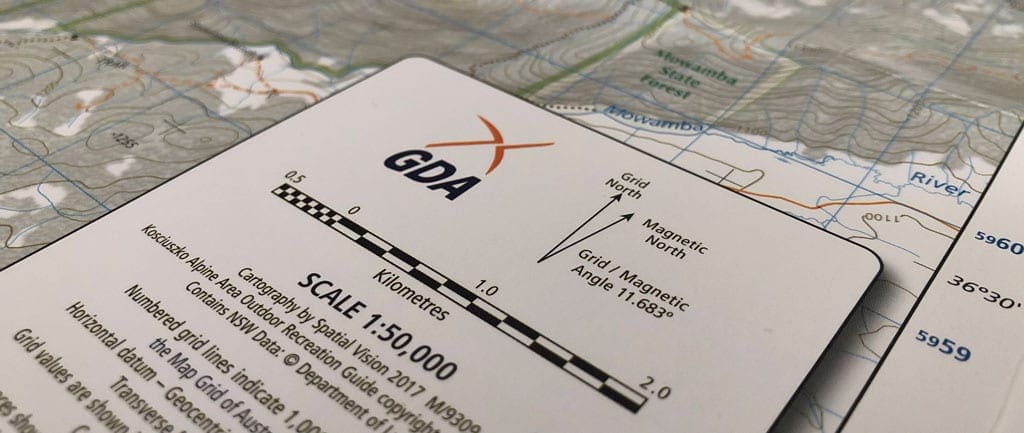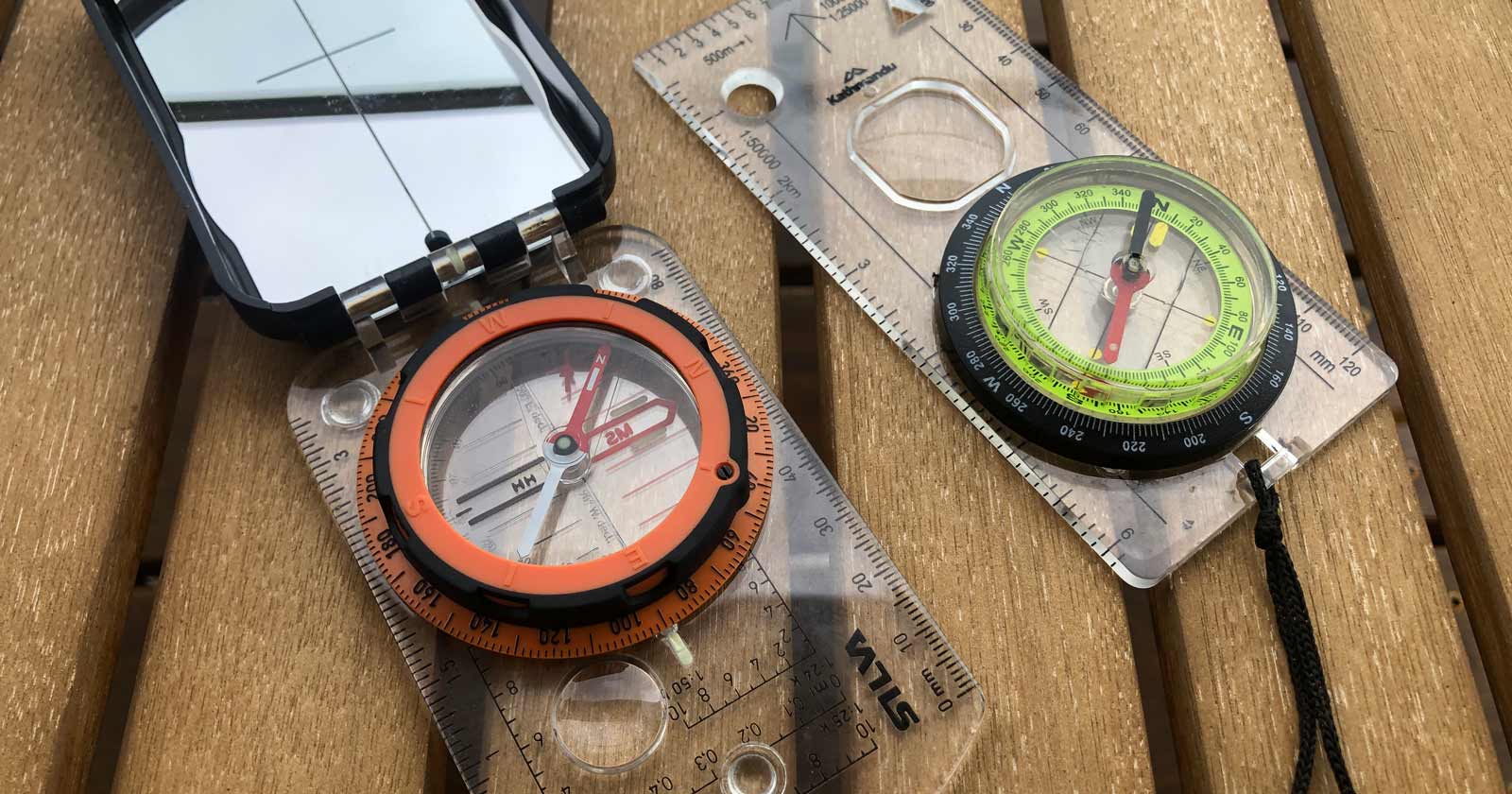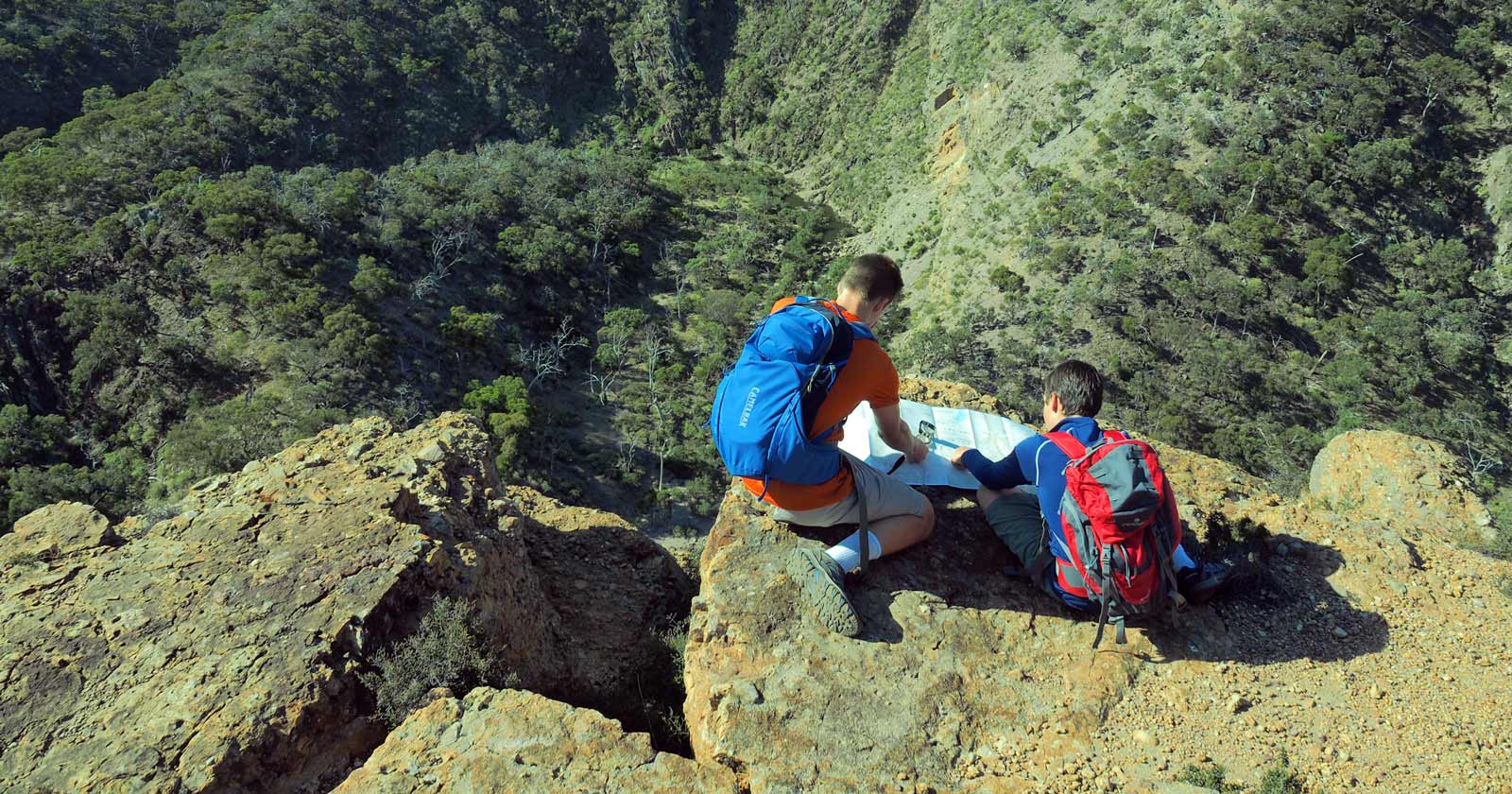Mastering Compass Navigation for Safe Hiking in Australia
Navigating the Australian wilderness with confidence requires a fundamental skill: compass usage. This essential tool can be your lifeline, guiding you back to safety when you or a fellow hiker veers off the beaten path.
Acquiring Compass Proficiency
To become an adept compass user, careful attention to the following instructions is crucial. Allow the concepts to fully sink in, devising memory aids and simple checks to ensure accuracy. Ponder whether to add or subtract magnetic variation, and identify map features that can aid in navigation. Practice taking bearings during walks, seeking guidance from experienced leaders. Regularly compare your bearings with those of other hikers.
Understanding Map Features
Familiarise yourself with map symbols representing gullies, ridges, spurs, saddles, plateaux, rivers, cliffs, and mountains. Learn to recognise these features on the ground. Identify landmarks that can serve as reference points and assess terrain for ease of traversal. Observe the routes taken by experienced hikers and analyze their choices. Consider potential emergency shelters during storms, evaluate the potability of creek water, locate nearby farmhouses for assistance, and pinpoint sources of unpolluted drinking water.
Compass Selection and Usage
Most hikers begin with a basic compass equipped with a straight edge, typically priced between $20 and $30. This affordable option offers years of reliable service. However, for those seeking enhanced ease of use, a compass with an offset adjustment for magnetic variation is recommended. The Silva brand is particularly well-regarded. These compasses simplify bearing calculations and minimise the risk of navigational errors. Magnetic variation varies considerably across Australia, necessitating adjustments based on your specific location.
Essential Compass Notes
- Grid North (GN) vs. True North (TN): Grid north typically differs from true north, with the magnitude of variation dependent on the map. This difference is usually less than 2 degrees.
- Compass Reading Interference: Avoid taking compass readings directly under high voltage transmission lines, near objects containing iron (e.g., car bonnets), in areas with high iron content, or close to watches, packs, or other compasses. These factors can deflect the compass needle from magnetic north, resulting in inaccurate readings.
- Map Orientation: When taking bearings from a map, orientation is irrelevant. However, aligning the map to true north may enhance your ability to correlate map features with real-world surroundings.
- Compass Protection: Protect your compass from heat and damage. Common practices include carrying it on a loop of thin cord around the neck for easy access or storing it alongside the map in a neck-worn case. This allows for frequent location checks on the move, eliminating the need to stop and repack the map and compass repeatedly.
- Resources and Practice: Numerous excellent books on compass navigation are available. Select a resource that suits your learning style. Remember, practice is paramount to mastering compass skills.
Determining a Point-to-Point Grid Bearing
To determine a grid bearing between two points, denoted as Point A (your current location) and Point B (your destination) on a map, follow these steps:
- Align the compass with the map: Place the compass along a straight line connecting Point A and Point B on the map. Ensure the direction-of-travel arrow on the compass baseplate points towards Point B.
- Orient the compass bezel: Rotate the compass bezel until the north orienting arrow on the bottom of the bezel aligns with the top of the map, representing grid north. This alignment helps minimise parallax error while aligning the compass with the vertical grid lines on the map.
- Read the grid bearing: The grid bearing can now be read directly from the compass bezel along the bearing line. This bearing, however, needs to be converted into a magnetic bearing before it can be used for navigation.
When using both magnetic and grid bearings in Australia, it is important to understand the concept of declination and how to apply it correctly to ensure accurate navigation. Declination is the angle between magnetic north and grid north, and it varies depending on your location. In Australia, declination values can range from positive (east) to negative (west) and can change over time.
To accurately use both magnetic and grid bearings, you need to consider the grid magnetic angle (GMA), which is the angle between grid north and magnetic north at a specific location and time. The GMA is provided on most Australian topographic maps and is typically expressed in degrees east or west of grid north.
Converting Magnetic Bearings to Grid Bearings in Australia
Sometimes you will need to convert magnetic bearings, obtained from a compass, to grid bearings, which are used on maps. This conversion is necessary because magnetic north, the direction indicated by a compass needle, does not align perfectly with true north, the direction along a meridian line. The difference between magnetic north and true north is called magnetic declination.
In Australia, magnetic declination is constantly changing, and the rate of change varies across the country. To find the current magnetic declination for your location, you can use a magnetic declination calculator or consult a map legend. Magnetic declination values are typically expressed in degrees east or west of true north.
Another factor that affects the conversion between magnetic bearings and grid bearings is grid convergence. Grid convergence is the angle between the grid lines on a map and the true meridian lines at a particular location. Grid convergence is usually very small, and it can be positive or negative. The value of grid convergence is typically provided on map legends.
Steps to Convert a Magnetic Bearing to a Grid Bearing
- Obtain the magnetic bearing: Use a compass to take a bearing to the object of interest. This will be your magnetic bearing.
- Determine the magnetic variation: Look for the GMA (Grid Magnetic Angle) on your map. The GMA is typically expressed in degrees east or west. If you are in eastern Australia, add the GMA to the magnetic bearing to obtain the grid bearing. If you are in western Australia, subtract the GMA from the magnetic bearing to obtain the grid bearing.
- Adjust the compass: Rotate the compass dial so that the baseplate arrow is aligned with the grid bearing. Ignore the needle at this point.
- Orient the compass on the map: Place the compass on the map with the baseplate edge touching your current position. Rotate the entire compass until the north-south axis of the dial lines up with the vertical grid lines on the map.
- Read the bearing: The side of the compass now indicates the grid bearing to the object of interest. This is the direction you should follow on the map.
Alternative Method: An alternative method to converting magnetic bearings to grid bearings is to add the magnetic declination to the magnetic bearing at the time of taking the reading. This means aligning the compass dial with the north end of the compass needle at 12 degrees east (in eastern Australia) or 12 degrees west (in western Australia) rather than zero degrees.
Tip: The way I remember this in the east of Australia is that if I am adding the compass to the map (after taking a bearing), I need to add the magnetic declination to the magnetic bearing.
Converting Grid Bearings to Magnetic Bearings in Australia
Sometimes you will need to convert grid bearings, obtained from maps, to magnetic bearings, which are used for navigation with a compass. This conversion is necessary because magnetic north, the direction indicated by a compass needle, does not align perfectly with true north, the direction along a meridian line. The difference between magnetic north and true north is called magnetic declination.
In Australia, magnetic declination is constantly changing, and the rate of change varies across the country. To find the current magnetic declination for your location, you can use a magnetic declination calculator or consult a map legend. Magnetic declination values are typically expressed in degrees east or west of true north.
Another factor that affects the conversion between grid bearings and magnetic bearings is grid convergence. Grid convergence is the angle between the grid lines on a map and the true meridian lines at a particular location. Grid convergence is usually very small, and it can be positive or negative. The value of grid convergence is typically provided on map legends.
Steps to Convert a Grid Bearing to a Magnetic Bearing
- Obtain the grid bearing: Read the grid bearing from the map. This will be your grid bearing.
- Determine the magnetic variation: Look for the GMA (Grid Magnetic Angle) on your map. The GMA is typically expressed in degrees east or west. If you are in eastern Australia, subtract the GMA from the grid bearing to obtain the magnetic bearing. If you are in western Australia, add the GMA to the grid bearing to obtain the magnetic bearing.
- Adjust the compass: Rotate the compass dial so that the baseplate arrow is aligned with the magnetic bearing. Ignore the needle at this point.
- Orient the compass on the map: Place the compass on the map with the baseplate edge touching your current position. Rotate the entire compass until the north-south axis of the dial lines up with the vertical.
Tip: The way I remember this in the east of Australia is that if I am subtracting the compass from the map (after taking a bearing), I need to subtract the magnetic declination from the grid bearing.
Navigating Along a Magnetic Bearing
To navigate along a magnetic bearing, follow these steps:
- Set the magnetic bearing: With the compass held horizontally, rotate the bezel until the specified magnetic bearing aligns with the direction-of-travel arrow on the compass baseplate.
- Orient yourself: Turn yourself slowly until the north end of the compass needle aligns with the reference points on the compass bezel (typically two luminescent dots or lines) or points directly to the “N” marking. This ensures you are facing the direction indicated by the magnetic bearing.
- Proceed along the bearing: Begin walking in the direction indicated by the compass needle, maintaining a consistent pace and checking your bearing periodically to ensure you remain on track.
- Address obstacles: While walking along a magnetic bearing, you may encounter obstacles like trees, rocks, or changes in terrain. In such cases, it’s advisable to break the journey into shorter segments, taking bearings of intermediate checkpoints along the way. This allows for more flexibility in navigating around obstacles while maintaining the overall direction.
- Utilise prominent landmarks: A simpler and more energy-efficient method is to take a bearing of a large, prominent landmark visible from a distance. This landmark could be a natural feature like a mountain, a prominent rock formation, or a tall tree, or it could be a man-made structure like a church spire, a building, or a communication tower.
By using these techniques, you can effectively navigate along magnetic bearings in the Australian wilderness, ensuring you reach your destination safely.
Measuring a Magnetic Bearing of a Distant Object
To determine the magnetic bearing of a distant object, follow these steps:
- Position the compass: Hold the compass at eye level and extend your arm towards the object you want to measure the bearing of. Ensure the compass is stable and free from any metallic objects that could interfere with the needle.
- Align the compass: Align the pointer or edge of the compass with the distant object. Ensure the direction-of-travel arrow on the compass baseplate points directly towards the object.
- Orient the bezel: Rotate the bezel (the rotating part of the compass) until the north end of the magnetic needle aligns with the reference points on the bezel. These reference points are typically two luminescent dots or lines, or they may be aligned directly with the red orienting arrow, depending on the compass model.
- Read the bearing: Once the magnetic needle is aligned, read the magnetic bearing directly from the bezel opposite the pointer line. The accuracy of the bearing is typically within ±5 degrees, depending on how carefully you hold the compass. Sighting compasses can improve accuracy to within 1 degree.
Caution: A common mistake is to align the wrong end of the compass needle with the object, resulting in an error of 180 degrees. The magnetised end that points towards magnetic north is usually colored red or blue.
Converting Magnetic Bearings to Grid Bearings
Determining your position on a map using compass readings requires converting magnetic bearings to grid bearings. Magnetic variation, the difference between magnetic north and grid north, plays a crucial role in this conversion.
In Australia, the general rule is to add the magnetic variation to the magnetic bearing to obtain the grid bearing. This can be remembered using the mnemonic “CMA” (Compass-Map-Add). However, it’s essential to note that magnetic variation varies significantly across Australia, ranging from about 5° west of True North in Western Australia to about 15° east of True North in eastern Australia. Therefore, the specific value of magnetic variation should always be obtained from a map legend or declination table for your specific location.
Example: If you take a compass bearing of a distant object in Sydney and find it to be 78 degrees magnetic, you would add the magnetic variation of 12 degrees to obtain a grid bearing of 90 degrees. This indicates that the object is due east of your current location. This is because the magnetic north in Sydney is offset by 12 degrees east of grid north.
Caution: The most common mistake in compass navigation is subtracting the magnetic variation instead of adding it. This error results in a bearing that is off by twice the magnetic variation, potentially leading you astray. Always remember the rule: add the magnetic variation to the magnetic bearing to obtain the grid bearing.
Locating Your Position Using Back Bearings
Navigating in the Australian wilderness often requires determining your position on a map. One effective method is to use back bearings, which involves taking compass bearings of prominent landmarks and plotting them on the map.
- Take a Compass Bearing: Identify a recognisable landmark in the distance, such as a mountain, a tall tree, or a communication tower. Use your compass to take a magnetic bearing of this landmark.
- Convert to Grid Bearing: Determine the magnetic variation for your area from a map legend or a declination table. Add the magnetic variation to the magnetic bearing to obtain the grid bearing.
- Plot the Back Bearing Line: On your map, start from the identified landmark and draw a straight line in the direction of the grid bearing. This line represents the possible area where you are located.
- Take a Second Back Bearing: Choose a second prominent landmark, ideally at an angle of approximately 90 degrees from the first landmark. Repeat the process of taking a magnetic bearing, converting it to a grid bearing, and plotting the back bearing line on the map.
- Find the Intersection: The intersection of the two back bearing lines indicates your approximate position on the map. If your bearing objects are distinct, not too far away, and your compass alignment is accurate, you should be within 100 meters of the intersection point.
- Refine Your Position (Optional): For enhanced accuracy, consider taking a bearing from a third landmark and plotting the corresponding back bearing line. This will form a triangle on the map, further narrowing down your location.
Remember, accurate compass usage and careful map interpretation are crucial for successful navigation using back bearings.
Deliberately Offsetting Bearings (Aiming Off for Critical Features)
When approaching a long, prominent feature that runs perpendicular to your path, such as a cliff line, a road, or a river, it can be challenging to determine whether to turn left or right upon reaching it. This can lead to time-consuming detours if you make the wrong decision.
To avoid this uncertainty, consider deliberately offsetting your bearing (aiming off) by a few degrees to one side of the feature. This technique is particularly useful when you cannot clearly see the feature or its aiming point.
- Determine the Magnetic Bearing: Using your map, identify the feature you want to approach and determine the magnetic bearing directly towards it.
- Introduce an Offset: Intentionally offset the bearing by a few degrees, typically around 2 degrees, to either the left or right of the aiming point. This offset will ensure that upon reaching the feature, you will have to turn in the direction of the aiming point, eliminating the uncertainty of turning left or right.
- Navigate Using the Offset Bearing: Follow the offset bearing using your compass. Once you reach the feature, you will know exactly which direction to take to proceed towards the aiming point.
This technique of deliberately offsetting bearings can be particularly helpful when time is critical and avoiding unnecessary detours is crucial. Remember, careful map interpretation and accurate compass usage are essential for successful navigation in the Australian wilderness.
Magnetic Variation (Declination)
Every topographic 1:25000 map issued by the Central Mapping Authority (CMA) in Australia displays the magnetic variation, also known as declination, for that specific area. This crucial information accounts for the difference between magnetic north, which the compass needle points to, and grid north, which aligns with the vertical grid lines on a map.
If you were to plot the magnetic variation values across Australia, you would notice significant variation across the country. The magnetic variation is constantly changing, albeit very slowly, and generally moves eastward. This dynamic nature necessitates adjustments to compass readings based on the specific location you are navigating in.
Remember to account for the magnetic variation when planning your hiking route and taking compass bearings. This ensures accurate navigation and avoids potential detours or errors in direction.
Estimating Hiking Time
Accurately estimating the time required to complete a bushwalk is crucial for planning and pacing your journey. Several factors influence the overall hiking pace, including terrain, vegetation cover, group fitness level, and pack weight.
Terrain:
- Climbing up steep, scrub-covered spurs: 1 kilometer per hour (kph)
- Scrambling over large rocks along a steep creek: 2 kph
- Walking down a steep spur: 3 kph
- Walking along a flat track: 4 kph (maintainable throughout the day)
Group Fitness and Pack Weight:
- Fit group with light day packs: Faster pace
- Unfit group with heavy overnight packs: Slower pace
Daily Pace Variations:
- Early morning: High energy levels
- Midday: Pace slows due to lunch and heat
- Late afternoon: Fatigue sets in, especially after uphill climbs
Rest and Breaks:
- Plan for short rest periods every hour (approximately 5 minutes)
- Schedule longer tea breaks every 2 hours (additional 5 minutes)
Experience-Based Estimation:
- Over time, your experience will refine your ability to estimate hiking times
Additional Considerations:
- Dense vegetation: Slower pace
- Steeper slopes: Slower pace
- Shorter legs: Slower pace
- Lower energy levels: Slower pace
- Injuries or blisters: Significantly slower pace
To estimate the total hiking time, divide the estimated distance by the anticipated pace of the group. For example, a 2-kilometer walk at a 4 kph pace would take approximately 0.5 hours. Remember, most bushwalks are not races. Enjoy the natural beauty, observe wildlife, and take breaks to unwind and recharge.
Acquiring Compass Proficiency
To become an adept compass user, careful attention to the following instructions is crucial. Allow the concepts to fully sink in, devising memory aids and simple checks to ensure accuracy. Ponder whether to add or subtract magnetic variation, and identify map features that can aid in navigation. Practice taking bearings during walks, seeking guidance from experienced leaders. Regularly compare your bearings with those of other hikers.
Understanding Map Features
Familiarise yourself with map symbols representing gullies, ridges, spurs, saddles, plateaux, rivers, cliffs, and mountains. Learn to recognise these features on the ground. Identify landmarks that can serve as reference points and assess terrain for ease of traversal. Observe the routes taken by experienced hikers and analyze their choices. Consider potential emergency shelters during storms, evaluate the potability of creek water, locate nearby farmhouses for assistance, and pinpoint sources of unpolluted drinking water.
Compass Selection and Usage
Most hikers begin with a basic compass equipped with a straight edge, typically priced between $20 and $30. This affordable option offers years of reliable service. However, for those seeking enhanced ease of use, a compass with an offset adjustment for magnetic variation is recommended. The Silva brand is particularly well-regarded. These compasses simplify bearing calculations and minimise the risk of navigational errors. Magnetic variation varies considerably across Australia, necessitating adjustments based on your specific location.
Essential Compass Notes
- Grid North (GN) vs. True North (TN): Grid north typically differs from true north, with the magnitude of variation dependent on the map. This difference is usually less than 2 degrees.
- Compass Reading Interference: Avoid taking compass readings directly under high voltage transmission lines, near objects containing iron (e.g., car bonnets), in areas with high iron content, or close to watches, packs, or other compasses. These factors can deflect the compass needle from magnetic north, resulting in inaccurate readings.
- Map Orientation: When taking bearings from a map, orientation is irrelevant. However, aligning the map to true north may enhance your ability to correlate map features with real-world surroundings.
- Compass Protection: Protect your compass from heat and damage. Common practices include carrying it on a loop of thin cord around the neck for easy access or storing it alongside the map in a neck-worn case. This allows for frequent location checks on the move, eliminating the need to stop and repack the map and compass repeatedly.
- Resources and Practice: Numerous excellent books on compass navigation are available. Select a resource that suits your learning style. Remember, practice is paramount to mastering compass skills.
Find our more about how to use a map here >>






